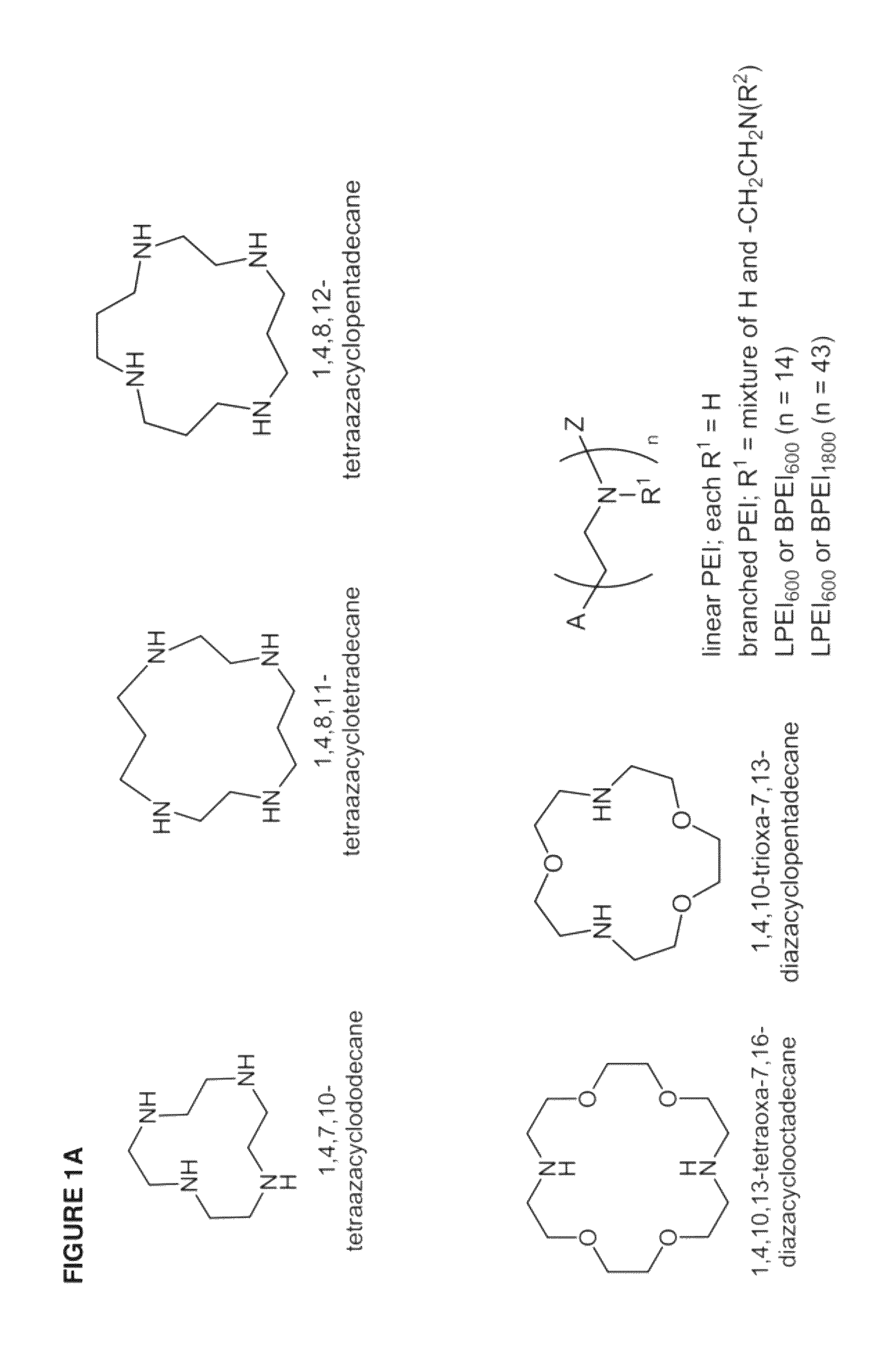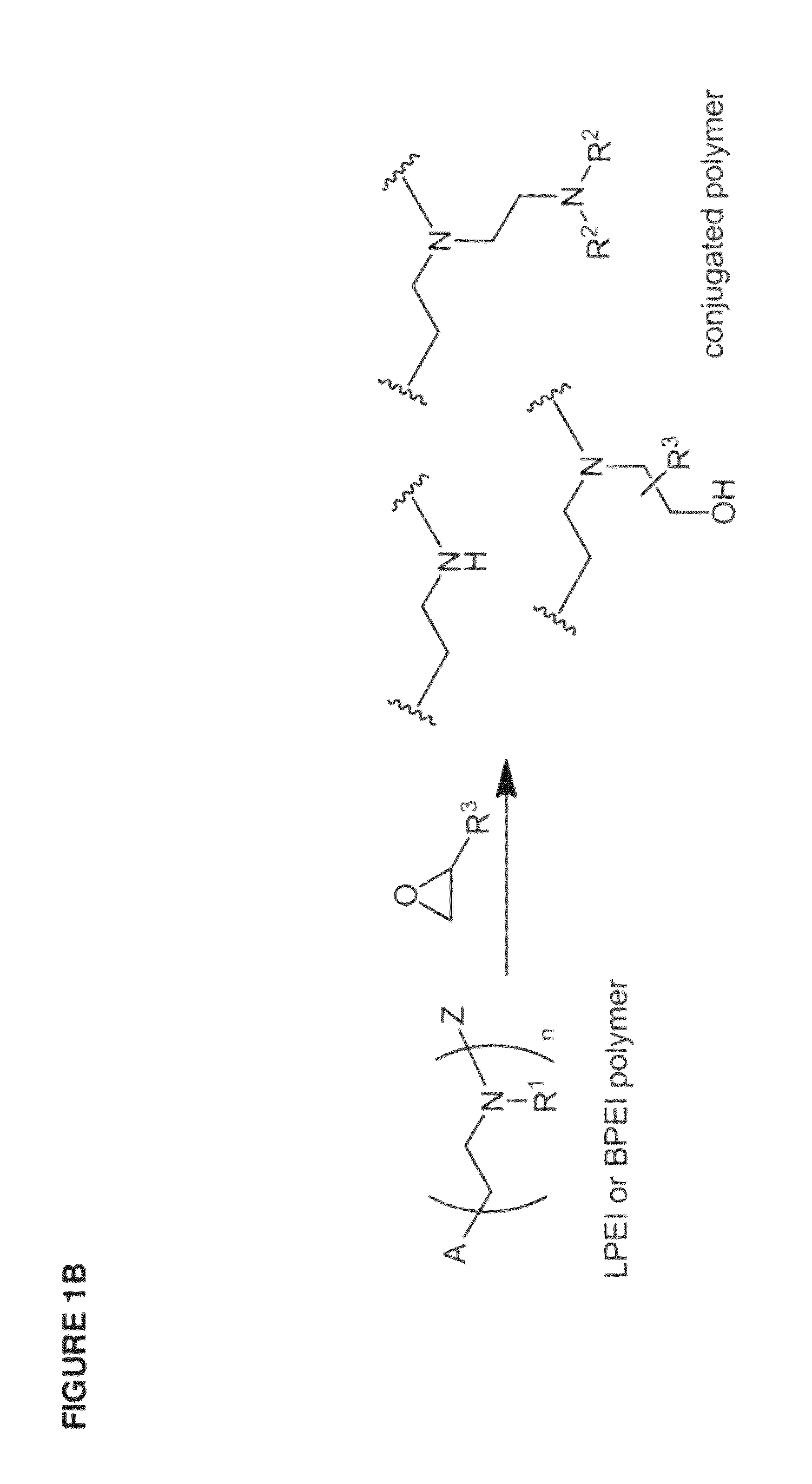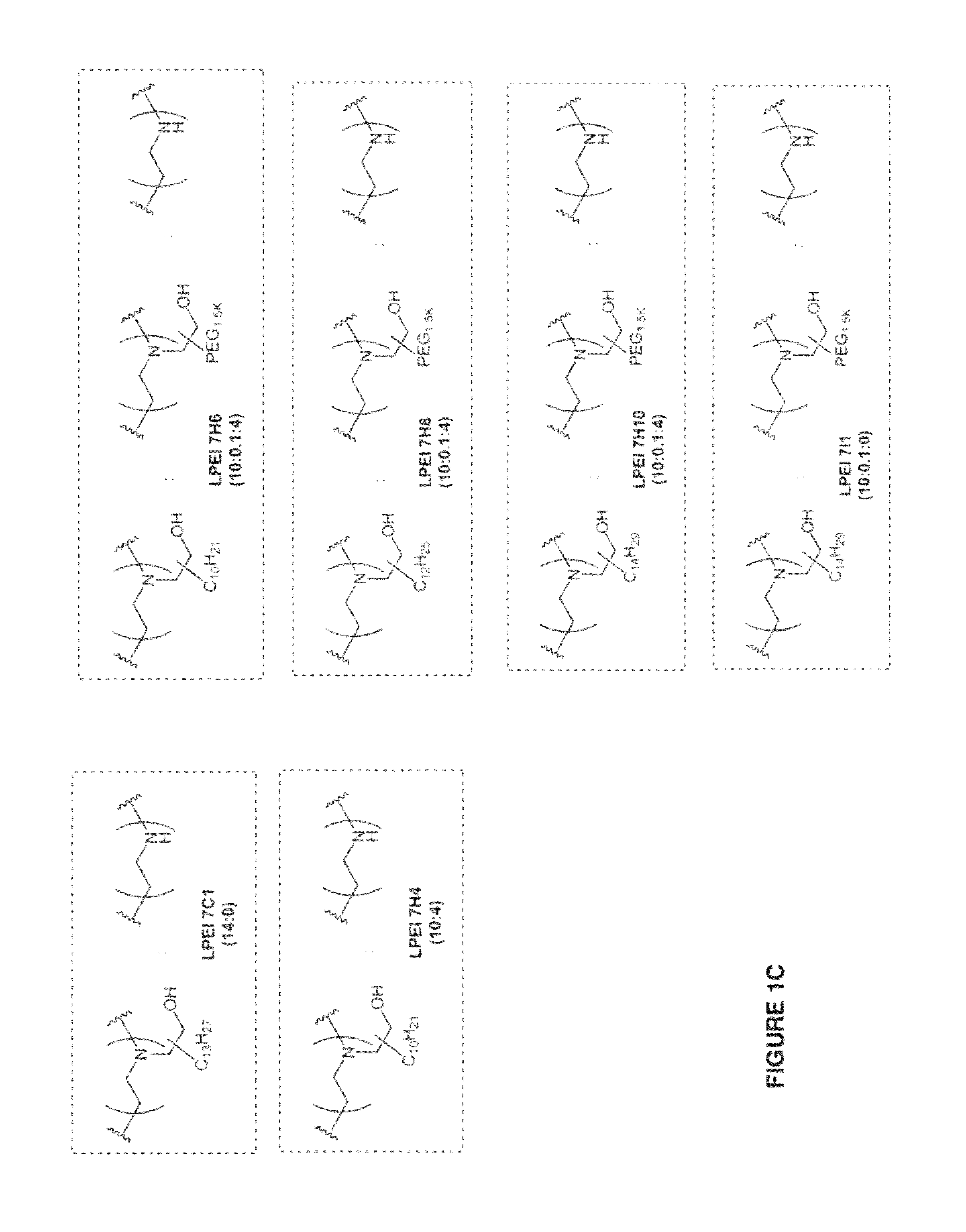Conjugated lipomers and uses thereof
a technology of conjugated lipomers and liposomes, applied in the field of conjugated liposomes, can solve the problems of ineffective transfection of plasmids nearing 100 nm, slow development of genetic drugs, etc., and achieve the effects of small reduction in mw, large reduction in mw, and large reduction in mn
- Summary
- Abstract
- Description
- Claims
- Application Information
AI Technical Summary
Benefits of technology
Problems solved by technology
Method used
Image
Examples
examples
[0435]In order that the invention described herein may be more fully understood, the following examples are set forth. It should be understood that these examples are for illustrative purposes only and are not to be construed as limiting this invention in any manner.
Library Synthesis
[0436]The inventive lipomers were synthesized using (i) a polymer PEI backbone a linear PEI with a molecular weight of 600 (LPEI600); a branched PEI with a molecular weight of 600 (BPEI600); a branched PEI with a molecular weight of 1800 (BPEI1800); or (ii) macrocyles comprising amino groups (e.g., aza-crown macrocycles). In each instance, the backbone was chemically modified with alkyl tails and / or PEG polymers by direct alkylation of one or more amino groups. Four structural parameters were varied in the screen: the number of alkyl tails and / or PEG polymers per backbone, and the length of the alkyl groups and / or PEG polymer per backbone. More specifically, the number of alkyl tails per backbone were va...
PUM
| Property | Measurement | Unit |
|---|---|---|
| molar ratio | aaaaa | aaaaa |
| Mn | aaaaa | aaaaa |
| dispersity | aaaaa | aaaaa |
Abstract
Description
Claims
Application Information
 Login to View More
Login to View More - R&D
- Intellectual Property
- Life Sciences
- Materials
- Tech Scout
- Unparalleled Data Quality
- Higher Quality Content
- 60% Fewer Hallucinations
Browse by: Latest US Patents, China's latest patents, Technical Efficacy Thesaurus, Application Domain, Technology Topic, Popular Technical Reports.
© 2025 PatSnap. All rights reserved.Legal|Privacy policy|Modern Slavery Act Transparency Statement|Sitemap|About US| Contact US: help@patsnap.com



